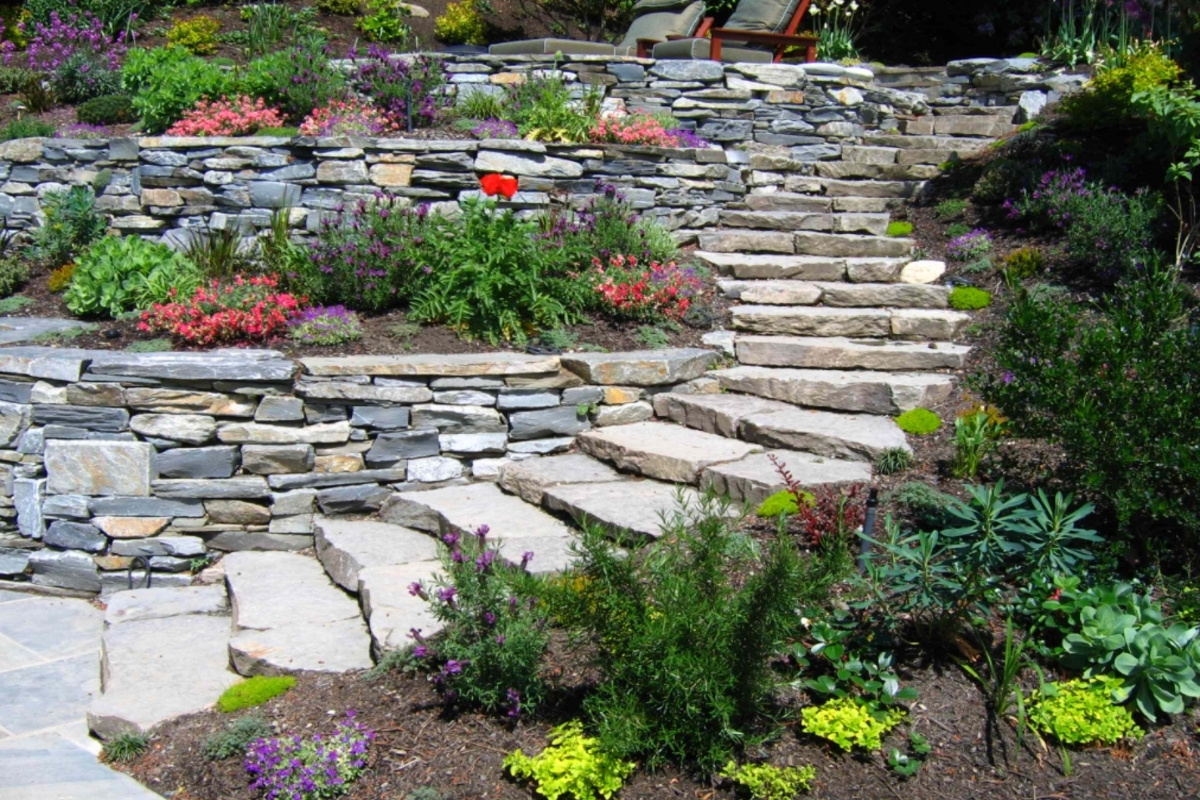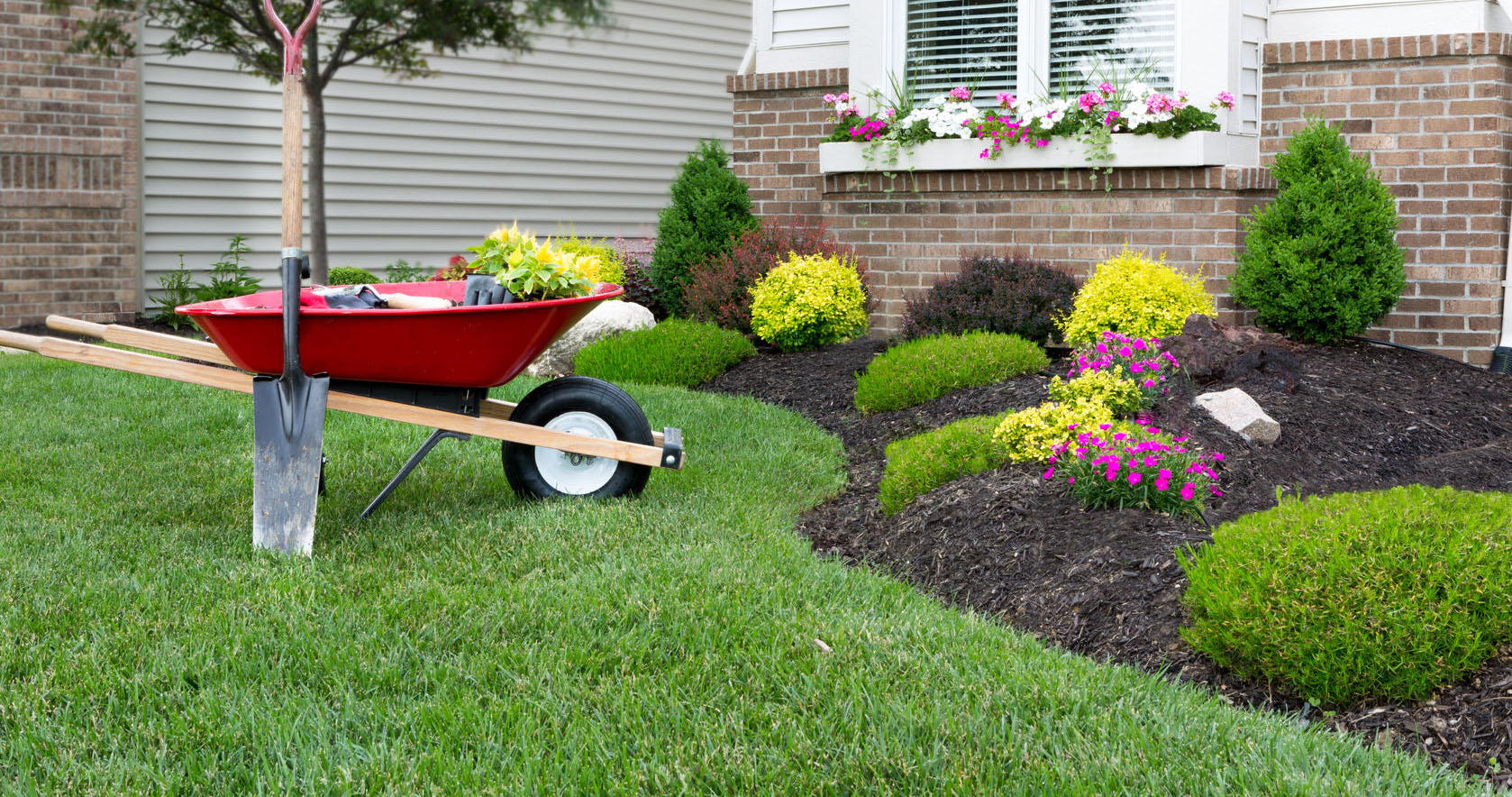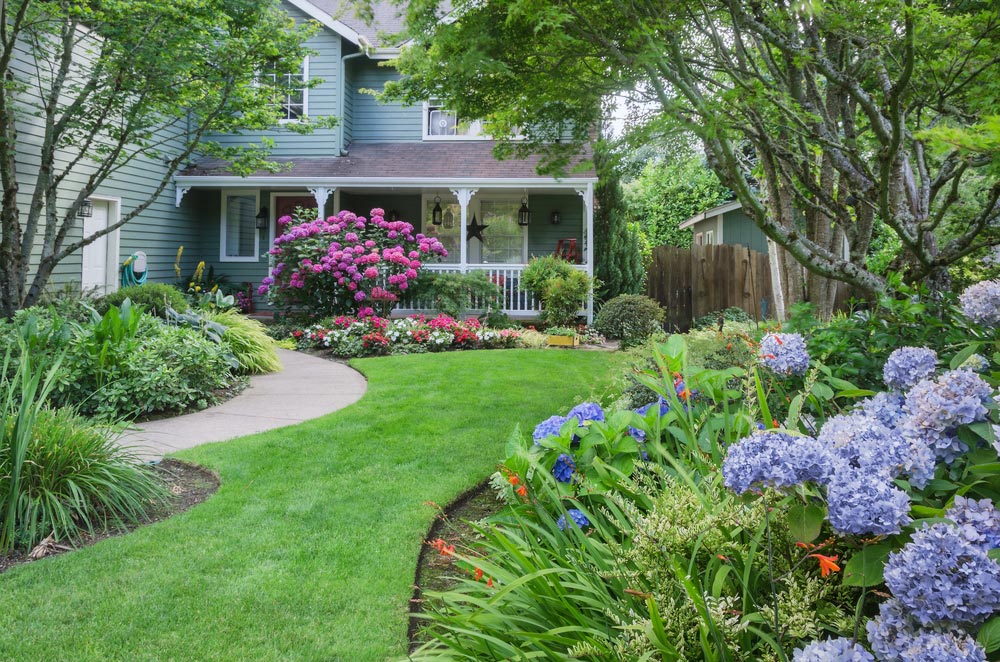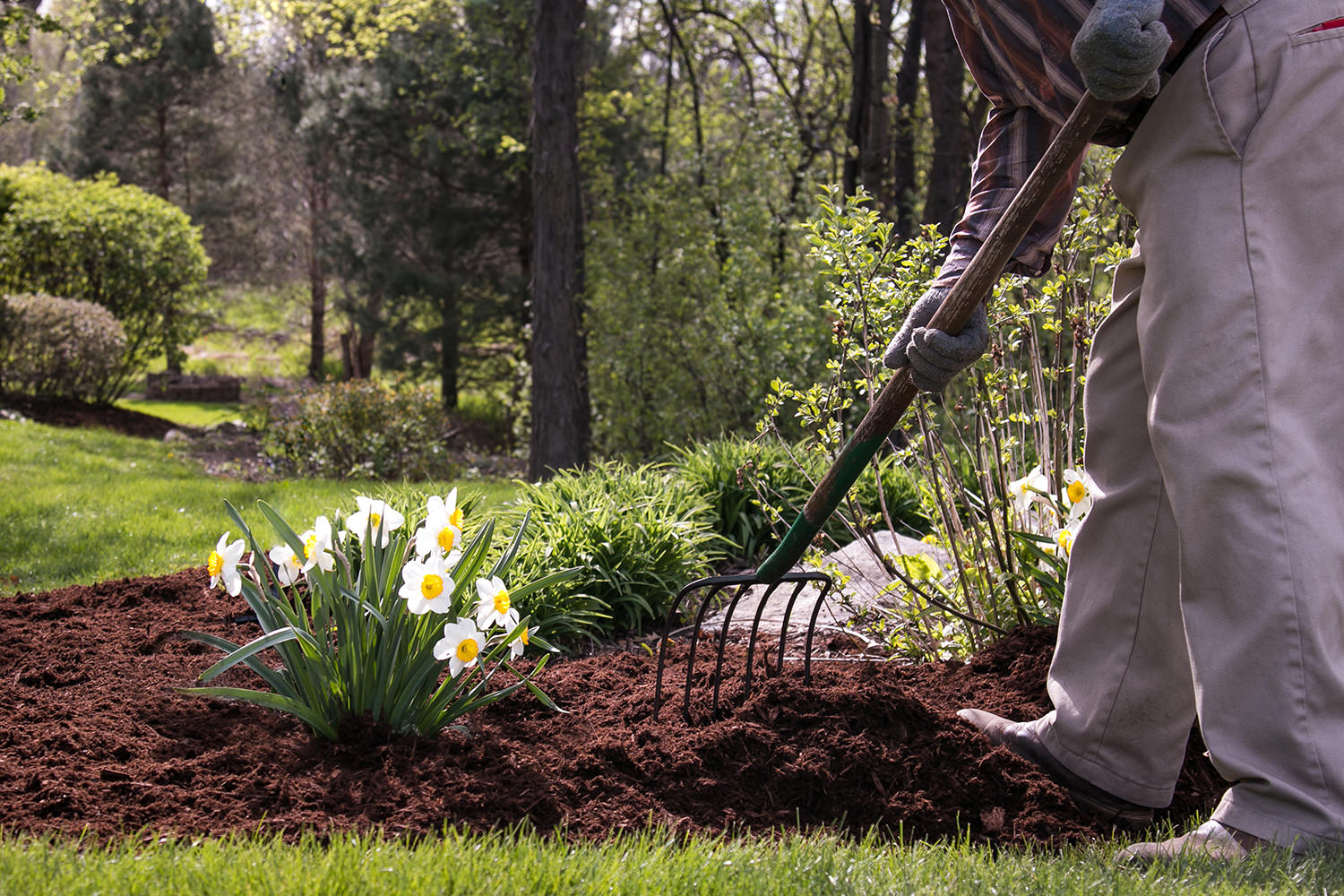Home>Gardening News and Trends>Latest News>What Industry Is Landscaping In


Latest News
What Industry Is Landscaping In
Modified: January 22, 2024
Discover the latest news and updates in the landscaping industry. Stay informed about industry trends, innovations, and expert advice.
(Many of the links in this article redirect to a specific reviewed product. Your purchase of these products through affiliate links helps to generate commission for Chicagolandgardening.com, at no extra cost. Learn more)
Table of Contents
- Introduction
- Definition of Landscaping Industry
- Types of Businesses within the Landscaping Industry
- Landscaping Services Offered
- Equipment and Tools Used in the Landscaping Industry
- Trends and Innovations in the Landscaping Industry
- Challenges and Opportunities in the Landscaping Industry
- Environmental Impact of the Landscaping Industry
- Conclusion
Introduction
The landscaping industry is part of the broader green industry, which encompasses all businesses involved in the design, installation, and maintenance of outdoor spaces. Landscaping professionals create beautiful and functional outdoor environments, enhancing the aesthetics and functionality of residential and commercial properties. Whether it’s designing an elaborate garden, installing irrigation systems, or maintaining lawns, the landscaping industry plays a crucial role in creating and maintaining outdoor spaces that are visually appealing and sustainable.
This industry has been experiencing significant growth in recent years, driven by increased consumer awareness of the benefits of well-maintained outdoor spaces and a growing focus on environmental sustainability. As more individuals and businesses recognize the value of a well-designed and manicured property, the demand for landscaping services continues to rise.
With the increasing importance of outdoor living spaces, landscaping has evolved from a simple lawn care service to a full-fledged industry that encompasses various specialties. Companies in the landscaping industry provide a wide range of services, including landscape design, installation, maintenance, hardscaping, and tree care. These services are offered to both residential and commercial clients, catering to their unique needs and preferences.
Successful landscaping businesses utilize a combination of artistry, horticultural knowledge, and technical skills to transform outdoor spaces into stunning landscapes. Through careful planning and design, landscaping professionals create harmonious settings that blend with the natural surroundings and complement the architectural style of the property.
The tools and equipment used in the landscaping industry have also advanced significantly in recent years. Technological innovations have streamlined the process of designing, planning, and implementing landscaping projects, allowing for more efficient operations and higher quality outcomes.
Despite the numerous opportunities in the landscaping industry, businesses operating in this sector also face various challenges. These challenges include seasonal fluctuations in demand, labor shortages, competition, and increasing concerns about the environmental impact of certain landscaping practices.
In this article, we will explore the various aspects of the landscaping industry, from its definition and different types of businesses to the services offered, equipment used, trends and innovations, environmental impact, and the challenges and opportunities encountered. Let’s take a closer look at this thriving industry and understand its significance in shaping our outdoor spaces.
Definition of Landscaping Industry
The landscaping industry refers to a sector that encompasses a variety of businesses involved in the planning, design, installation, and maintenance of outdoor spaces. It focuses on creating aesthetically pleasing and functional environments by manipulating and enhancing natural elements such as plants, trees, shrubs, and hardscape features.
Landscaping professionals work with residential and commercial clients to transform outdoor areas into visually appealing landscapes that improve the overall ambiance and value of the property. They employ various techniques, principles, and materials to create harmonious settings that meet the specific needs and preferences of each client.
In the landscaping industry, professionals typically provide a range of services that include landscape design, installation, and maintenance. Landscape design involves the process of planning and conceptualizing outdoor spaces, taking into consideration factors such as topography, climate, soil conditions, and client requirements. It includes creating detailed plans and renderings to guide the implementation of the project.
Once the design is approved, landscaping companies undertake the installation process, which may involve tasks such as planting trees and shrubs, laying sod or seeding grass, constructing walkways and patios, installing irrigation systems, and adding decorative elements like fountains or outdoor lighting. During the installation process, landscaping professionals utilize a variety of tools and equipment to ensure the project is completed efficiently and to a high standard.
After the initial installation, ongoing maintenance is crucial to preserve the health and beauty of the landscape. Maintenance services provided by landscaping companies may include mowing, trimming, pruning, fertilizing, pest management, and seasonal clean-up. Regular maintenance ensures that the landscape remains vibrant and healthy, enhancing its long-term sustainability and appeal.
The scope of the landscaping industry extends beyond traditional gardening and lawn care. It also includes specialty areas such as hardscaping, which involves the incorporation of non-living elements like rocks, stones, pavers, and concrete into the landscape design. Hardscaping features can include patios, pathways, retaining walls, and outdoor living spaces, which add structure and functionality to the overall design.
Additionally, the landscaping industry encompasses services related to tree care, such as pruning, tree removal, and stump grinding, as well as the installation and maintenance of irrigation systems to ensure proper water management. Landscaping professionals may also offer services like landscape lighting, garden installations, and the creation of sustainable and eco-friendly landscapes.
In summary, the landscaping industry encompasses a wide range of services aimed at creating and maintaining attractive and functional outdoor spaces. Landscaping professionals utilize their knowledge of plants, design principles, and construction techniques to transform landscapes into captivating environments that enhance the quality of life for residential and commercial clients.
Types of Businesses within the Landscaping Industry
The landscaping industry is comprised of various types of businesses that cater to the diverse needs and preferences of clients. These businesses specialize in different aspects of landscaping, offering unique services and expertise to create and maintain outdoor spaces. Here are some of the main types of businesses within the landscaping industry:
- Landscape Design Firms: Landscape design firms focus on the creative aspects of landscaping, providing clients with detailed plans and designs for their outdoor spaces. These firms employ landscape architects and designers who work closely with clients to understand their vision and develop custom designs that meet their specific needs and preferences.
- Landscape Construction Companies: Landscape construction companies are responsible for turning the designs created by landscape designers into reality. They handle the installation and construction aspects of landscaping projects, including tasks such as planting trees and shrubs, building walkways and patios, and installing irrigation systems.
- Landscape Maintenance Companies: Landscape maintenance companies specialize in the ongoing care and maintenance of outdoor spaces. Their services typically include lawn mowing, trimming, fertilization, pest control, and general upkeep to ensure that landscapes remain healthy and visually appealing throughout the year.
- Hardscaping Contractors: Hardscaping contractors specialize in the installation of non-living elements within landscapes. They work with materials such as rocks, stones, pavers, and concrete to create structures like patios, pathways, retaining walls, and outdoor living spaces. Hardscaping contractors often collaborate with landscape designers and construction companies to integrate hardscape features seamlessly into the overall design.
- Tree Care Services: Tree care services focus on the health and maintenance of trees within landscapes. They provide tree pruning, tree removal, stump grinding, and other related services. Tree care professionals are highly skilled in assessing tree health, diagnosing diseases, and implementing proper care techniques to ensure the longevity and vitality of trees.
- Irrigation Specialists: Irrigation specialists specialize in the design, installation, and maintenance of irrigation systems for landscapes. They ensure that plants and lawns receive proper water supply and help clients optimize water usage for environmental sustainability. Irrigation specialists are knowledgeable about water-saving technologies and efficient irrigation methods to minimize water wastage.
- Specialty Service Providers: The landscaping industry also includes specialty service providers that offer niche services such as landscape lighting, garden installations, turf management, and sustainable landscaping solutions. These businesses cater to specific client requirements and provide expertise in their respective areas of specialization.
These various types of businesses within the landscaping industry often collaborate and work together to deliver comprehensive landscaping services that meet the unique needs of clients. Each type of business plays a crucial role in creating and maintaining beautiful and functional outdoor spaces that enhance the aesthetics and value of properties.
Landscaping Services Offered
The landscaping industry offers a wide range of services to cater to the diverse needs and preferences of residential and commercial clients. These services encompass all aspects of creating and maintaining outdoor spaces, ensuring that landscapes are visually appealing, functional, and sustainable. Here are some of the main landscaping services offered:
- Landscape Design: Landscape design is a fundamental service provided by landscaping professionals. It involves the development of comprehensive plans and designs for outdoor spaces, taking into consideration factors such as site analysis, client requirements, aesthetics, and functionality. Landscape designers use their artistic and technical skills to create visually appealing layouts that harmonize with the natural surroundings and meet client expectations.
- Landscape Installation: Once the design is finalized, landscaping companies proceed with the installation process. This involves transforming the design concept into a tangible landscape by planting trees, shrubs, flowers, and other plants. It also includes the construction of hardscape features like patios, walkways, and retaining walls. During the installation, landscaping professionals ensure proper soil preparation, drainage, and irrigation to promote healthy plant growth and longevity.
- Landscape Maintenance: Landscape maintenance is essential for preserving the beauty and health of outdoor spaces. This service involves regular care and upkeep tasks such as mowing, trimming, pruning, fertilizing, and weed control. Landscape maintenance also includes seasonal clean-up, debris removal, and pest management. By providing ongoing maintenance, landscaping professionals help ensure that landscapes remain visually appealing and sustainable over time.
- Hardscaping: Hardscaping refers to the incorporation of non-living elements into landscape designs. This service includes the construction of features such as patios, pathways, decks, pergolas, and outdoor kitchens. Hardscaping adds structure, functionality, and visual interest to outdoor spaces, creating areas for relaxation, entertainment, and outdoor living. Skilled hardscaping contractors work with various materials, including stone, concrete, wood, and metal, to create custom designs that complement the overall landscape.
- Irrigation Systems: Proper irrigation is crucial for maintaining healthy and vibrant landscapes. Landscaping professionals offer services related to the design, installation, and maintenance of irrigation systems. They assess the water needs of plants, determine the appropriate irrigation methods, and install efficient systems that distribute water evenly. By ensuring proper water management, irrigation services help reduce water waste and promote environmental sustainability.
- Tree Care: Tree care services focus on the health, maintenance, and management of trees within landscapes. These services include tree pruning to improve tree structure and encourage healthy growth, tree removal and stump grinding, disease and pest control, and tree planting. Tree care professionals have the expertise to assess tree health, diagnose issues, and implement appropriate care techniques to enhance the beauty and longevity of trees within outdoor spaces.
- Landscape Lighting: Landscape lighting enhances the nighttime appeal of outdoor spaces while adding an element of safety and security. Landscaping professionals offer services to design and install outdoor lighting systems that accentuate key landscape features, illuminate pathways and entrances, and create a warm and inviting ambiance. Landscape lighting designs may include techniques such as uplighting, downlighting, path lighting, and accent lighting, depending on the desired effect.
These are just a few examples of the diverse range of services offered by the landscaping industry. Landscaping professionals tailor their expertise to meet the specific needs and preferences of clients, working closely with them to create and maintain outdoor spaces that are visually stunning, functional, and sustainable.
Equipment and Tools Used in the Landscaping Industry
The landscaping industry heavily relies on a variety of equipment and tools to efficiently execute landscaping projects and maintain outdoor spaces. These tools not only enhance productivity but also ensure the delivery of high-quality results. Here are some of the essential equipment and tools used in the landscaping industry:
- Lawnmowers: Lawnmowers are essential for maintaining the health and appearance of lawns. Landscapers use different types of lawnmowers, including push mowers, ride-on mowers, and zero-turn mowers, to cut grass evenly and at the desired height.
- Trimmers and Edgers: Trimmers and edgers are used to give a neat and polished look to the edges of pathways, driveways, and flowerbeds. They help maintain clean lines and prevent grass and vegetation from encroaching on non-grassy areas.
- Hedge Trimmers: Hedge trimmers are utilized to sculpt and maintain the shape and appearance of hedges and shrubs. They allow landscapers to achieve precise trimming and create well-defined edges.
- Pruning Tools: Pruning tools such as hand pruners, loppers, and pruning saws are used to trim and shape trees, shrubs, and other plants. These tools enable landscapers to remove dead or overgrown branches, maintain the health of plants, and promote proper growth.
- Garden Tools: Various garden tools, like shovels, rakes, hoes, and trowels, are utilized for planting, digging, soil preparation, and general garden maintenance tasks. These tools aid in creating new garden beds, breaking up soil, removing weeds, and performing other necessary garden maintenance procedures.
- Leaf Blowers: Leaf blowers help landscapers efficiently remove leaves, grass clippings, and other debris from lawns, walkways, and other areas. They provide a quick and convenient method of clearing outdoor spaces, saving time and effort.
- Irrigation Tools: Landscapers utilize a range of tools to install and maintain irrigation systems, including trenching machines for digging trenches, pipe cutters for cutting irrigation pipes, and measuring devices for determining water pressure and flow rates.
- Hardscaping Equipment: Hardscaping projects involve the use of various equipment and tools, such as concrete mixers, brick saws, compactors, and stone cutters. These tools are essential for preparing surfaces, cutting materials, and ensuring proper installation of hardscape features like patios and walkways.
- Safety Equipment: Landscapers prioritize safety on job sites and use personal protective equipment (PPE) such as gloves, safety goggles, steel-toed boots, and ear protection. They also use safety harnesses and equipment when working at heights or on steep terrains.
- Power Tools: Power tools, including chainsaws, hedge trimmers, and brush cutters, are utilized to efficiently and effectively manage larger-scale landscaping projects. They offer increased power and speed, allowing landscapers to handle more challenging tasks.
These are just a few examples of the equipment and tools used in the landscaping industry. Landscapers select the appropriate tools based on the specific requirements of each project, ensuring that they have the necessary equipment to deliver exceptional results in a timely and efficient manner.
Trends and Innovations in the Landscaping Industry
The landscaping industry is continuously evolving, with new trends and innovations shaping the way outdoor spaces are designed, installed, and maintained. These advancements reflect changing preferences, emerging technologies, and a growing emphasis on sustainability. Here are some of the current trends and innovations in the landscaping industry:
- Sustainable Landscaping: There is a growing focus on creating sustainable landscapes that minimize environmental impact. Sustainable landscaping practices include using native plants that require less water and maintenance, implementing efficient irrigation systems to conserve water, incorporating rainwater harvesting techniques, and integrating environmentally friendly materials into hardscape designs.
- Outdoor Living Spaces: There is a rising demand for outdoor living spaces that extend the functionality of homes. Landscaping professionals now design and install outdoor kitchens, fire pits, seating areas, and entertainment zones. With advancements in materials and technology, outdoor spaces can now be equipped with amenities such as built-in grills, refrigerators, and audiovisual systems, creating a seamless transition between indoor and outdoor living.
- Vertical and Rooftop Gardens: As urbanization continues, vertical and rooftop gardens have gained popularity. These innovative solutions maximize limited space by incorporating greenery on walls or rooftops. Vertical gardens utilize climbing plants and living walls, while rooftop gardens create lush landscapes in urban settings, offering multiple environmental benefits such as improved air quality and insulation.
- Smart Irrigation Systems: Smart irrigation systems leverage technology to optimize water usage and ensure efficient irrigation. These systems incorporate weather sensors, soil moisture sensors, and programmable controllers to monitor and adjust watering schedules based on current weather conditions and plant needs. By using real-time data and automation, smart irrigation systems help prevent water wastage and promote water conservation.
- Low-Maintenance Landscapes: With busy lifestyles, homeowners are seeking low-maintenance landscaping solutions. Landscapers now design landscapes that require minimal upkeep, utilizing durable and low-maintenance plants, mulch, and synthetic turf. This trend not only reduces maintenance requirements but also conserves water and minimizes the use of fertilizers and pesticides.
- Lighting Innovations: Advancements in lighting technology have transformed outdoor lighting design. LED lights are energy-efficient and long-lasting, offering a range of colors and intensities. Lighting designers now create dramatic effects by highlighting key landscape features, adding depth and ambiance to outdoor spaces. Wireless and smart lighting systems enhance convenience and allow for remote control and customization of lighting schemes.
- Green Roofs and Living Walls: Green roofs and living walls are innovative solutions for incorporating vegetation into urban environments. Green roofs are composed of vegetation and growing media installed on building rooftops, offering insulation, stormwater management, and habitat creation. Living walls, also known as vertical gardens, are vertical structures covered in plants, providing aesthetic appeal, air purification, and temperature regulation.
These trends and innovations reflect the evolving needs and desires of property owners and the industry’s commitment to sustainable and environmentally friendly practices. Landscaping professionals embrace these advancements to create outdoor spaces that not only enhance the beauty and functionality of properties but also contribute to a greener and more sustainable future.
Challenges and Opportunities in the Landscaping Industry
While the landscaping industry presents numerous opportunities, it also faces several challenges that require careful navigation and adaptation. At the same time, these challenges open up possibilities for growth and evolution. Here are some of the main challenges and opportunities in the landscaping industry:
- Seasonal Fluctuations: Landscaping is a seasonal industry, with demand peaking during the spring and summer months. This seasonality poses challenges in terms of managing cash flow, staffing, and workload distribution. However, it also provides an opportunity for diversification and offering additional services during slower seasons, such as snow removal, holiday decorations, or indoor plant care.
- Labor Shortages: Finding and retaining skilled labor is an ongoing challenge in the landscaping industry. Factors such as physical demands, seasonal employment, and competition from other industries make it difficult to attract and retain qualified employees. To address this challenge, companies can offer competitive wages, provide training and career development programs, and adopt employee retention strategies to build a loyal and skilled workforce.
- Competition: The landscaping industry is highly competitive, with many small and large-scale players vying for clients. To stand out in a crowded market, businesses must differentiate themselves through exceptional customer service, specialized expertise, unique design approaches, and a strong online presence. Building relationships with clients and consistently delivering high-quality work also contribute to gaining a competitive edge.
- Changing Client Expectations: Client expectations are continually evolving, and landscapers must adapt to meet these changing demands. Clients now seek environmentally friendly and sustainable landscaping solutions, personalized designs, and efficient project delivery. Landscapers have the opportunity to embrace these evolving expectations by offering eco-friendly practices, innovative design techniques, and efficient project management systems, enhancing their value proposition to clients.
- Environmental Impact: While landscaping enhances outdoor spaces, it also has an ecological footprint. Landscapers face the challenge of minimizing negative environmental impacts by implementing sustainable practices. This can involve using native and drought-tolerant plants, embracing organic and eco-friendly fertilizers and pesticides, conserving water through efficient irrigation systems, and promoting wildlife habitat preservation. By incorporating sustainable practices, landscapers can attract environmentally conscious clients and contribute to a greener future.
- Technology Integration: The integration of technology offers opportunities for increased efficiency and streamlined operations in the landscaping industry. Landscapers can leverage software solutions for project management, scheduling, and customer relationship management, facilitating better communication and organization. Additionally, adopting advanced equipment, such as robotic mowers or electric-powered tools, not only enhances productivity but also aligns with the industry’s growing emphasis on sustainability.
- Industry Regulations: Landscaping businesses must navigate various regulations related to licensing, permits, safety, and environmental compliance. Compliance with these regulations presents challenges but also opens opportunities for those who stay updated and embrace best practices. By adhering to industry regulations and standards, businesses can build trust with clients and operate with professionalism and integrity.
Despite the challenges, the landscaping industry presents significant opportunities for growth and success. As the demand for well-designed and well-maintained outdoor spaces continues to grow, there is ample room for businesses to establish themselves as industry leaders and innovators. By staying abreast of trends, adopting sustainable practices, leveraging technology, and delivering exceptional customer experiences, landscapers can thrive in this dynamic industry.
Environmental Impact of the Landscaping Industry
The landscaping industry plays a crucial role in beautifying and enhancing outdoor spaces, but it also has a significant environmental impact. Landscapers must be mindful of the potential environmental consequences of their practices and take proactive steps to minimize negative effects. Here are some key aspects of the environmental impact of the landscaping industry:
- Water Usage: Landscaping requires water for irrigation, which can contribute to water scarcity and increased demand on local water sources. However, through the use of efficient irrigation systems, such as smart systems and drip irrigation, landscapers can minimize water waste and maximize water conservation, reducing the environmental impact.
- Chemical Use: Pesticides, herbicides, and fertilizers are commonly used in landscaping to maintain plant health and control pests and weeds. However, the excessive or improper use of these chemicals can lead to water contamination, harm beneficial insects, birds, and other wildlife, and potentially pose health risks. Landscapers can adopt organic and eco-friendly alternatives, integrated pest management (IPM) strategies, and proper application techniques to minimize chemical use and promote environmentally friendly practices.
- Erosion and Soil Health: Improper site preparation and grading during landscaping projects can lead to erosion, soil compaction, and loss of topsoil. These issues can degrade soil health, reduce water infiltration, and contribute to sediment runoff into water bodies, impacting aquatic ecosystems. Landscapers can implement erosion control measures, such as erosion blankets and retaining walls, and follow best practices for soil health preservation to minimize these impacts.
- Biodiversity and Habitat Loss: Landscaping practices can inadvertently lead to the elimination of native plant species, reducing biodiversity and disrupting natural habitats. By prioritizing the use of native plants in designs and creating wildlife-friendly landscapes, landscapers can contribute to habitat preservation, supporting local ecosystems and promoting biodiversity.
- Energy Consumption: The use of powered equipment and machinery in landscaping operations contributes to energy consumption and greenhouse gas emissions. Choosing electric or battery-powered equipment instead of gas-powered alternatives can significantly reduce carbon emissions and air pollution. Additionally, adopting practices such as proper equipment maintenance, route planning, and optimizing work schedules can further minimize energy consumption.
- Waste Generation: Landscaping activities generate waste, including grass clippings, tree trimmings, and construction debris. Landscapers can implement proper waste management practices, such as composting, recycling, and responsible disposal, to reduce the amount of waste sent to landfills and promote resource conservation.
- Climate Change Adaptation and Mitigation: Landscaping holds potential for climate change adaptation and mitigation efforts. By strategically planting trees and vegetation, landscapers can provide natural cooling through shade, reduce the urban heat island effect, and sequester carbon dioxide from the atmosphere. Additionally, sustainable landscaping practices, such as water conservation and soil erosion prevention, contribute to climate change mitigation by reducing greenhouse gas emissions and promoting resilient environments.
Recognizing and addressing the environmental impacts of the landscaping industry is crucial for creating sustainable and ecologically responsible outdoor spaces. Landscapers can implement environmentally friendly practices, embrace sustainable design principles, educate clients on eco-conscious choices, and collaborate with experts and organizations to minimize negative environmental impacts and contribute positively to the health and vitality of our ecosystems.
Conclusion
The landscaping industry plays a vital role in creating and maintaining beautiful, functional, and sustainable outdoor spaces. Landscapers employ their expertise in design, installation, and maintenance to transform landscapes, enhancing the aesthetic appeal and value of residential and commercial properties. Throughout this article, we have delved into various aspects of the industry, including its definition, types of businesses, services offered, equipment used, trends and innovations, challenges, and environmental impact.
The landscaping industry continues to evolve, with trends and innovations shaping the way outdoor spaces are designed and maintained. From sustainable landscaping practices and outdoor living spaces to vertical gardens and smart irrigation systems, landscapers are embracing new technologies and techniques to meet the changing needs and preferences of clients while prioritizing environmental sustainability.
However, the industry also faces challenges, such as seasonal fluctuations, labor shortages, competition, changing client expectations, and environmental impacts. By addressing these challenges head-on, landscapers can find opportunities for growth and improvement. Embracing technology, implementing sustainable practices, and prioritizing customer satisfaction can help landscapers stay ahead in a competitive market.
It is crucial for landscapers to understand and minimize the environmental impact of their practices. By adopting eco-friendly approaches, reducing water use, minimizing chemical usage, preserving soil health, promoting biodiversity, and managing waste responsibly, landscapers can contribute to a greener future and healthier ecosystems.
In conclusion, the landscaping industry is a dynamic and essential sector, encompassing a wide range of services and opportunities. By staying updated on industry trends, embracing innovation, prioritizing sustainability, and delivering high-quality work, landscapers can thrive and create outdoor spaces that are not only visually appealing but also environmentally responsible.










